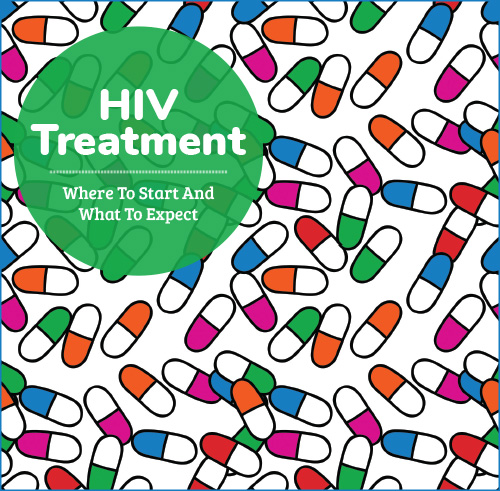HOME
PAST DIGITAL ISSUES
HIV/AIDS HOTLINES
HIV 101
POSITIVE PROFILES
ASO SPOTLIGHT
RECENT ARTICLES
HOW TO PAY FOR HIV TREATMENT AND MEDICATIONS
ADAP CRITERIA AND FORMULARIES
ASO LISTINGS
REVIEW OF HIV MEDICATIONS
2018 HIV/AIDS FUNDRAISING ACTIVITIES & EVENTS
ABOUT HIV POSITIVE! MAGAZINE
LINKS
SUBSCRIBE
CONTACT US
ADVERTISER INFORMATION

The most important thing you can do after you receive an HIV diagnosis is to begin seeing a doctor. Make sure the doctor you choose is an HIV specialist so they are current on all of the new treatments and trends. This is very important because there have been so many improvements and conveniences to medications over the past several years. Your HIV specialist can begin monitoring your body and your HIV. Seeing a doctor regularly will help assure you’ll start treatment, get it right and stick with it .
Your First Doctor Visit
Your HIV specialist will start out with a basic clinical assessment. This assessment will measure where you are with regard to your HIV virus status, can determine other existing medical conditions, check medications you are currently taking to consider potential drug interaction problems and other factors that can help in making your first shot at a regimen an effective and trouble-free one. This is also a good time to make sure you have a good rapport with the doctor and his staff because
you'll likely be a frequent visitor. Many people have actually become friends with their doctors and staff.
It is extremely important that you are completely honest with your doctor and staff members. If you think a question might be a little too personal or intrusive, just ask why the question is important and listen to the answer rather than being evasive. Things you think are minor or have no significance can actually be very important to your treatment.
Your doctor will review your tests and information then work with you on an individualized regimen that will be based on many of the following factors:
- Pre-existing physical conditions, ailments and diseases
- Potential adverse drug effects
- Potential drug interactions
- Gender and if you are pregnant or planning to be
- Drug resistance testing
- Your CD4 count
- Adherence ability
- Lifestyle and convenience issues such as pill burden (amount of pills) and frequency of dosing.
It's Recommended To Start Treatment Immediately.
The one test that you’ll be given which is still important and used to determine more than anything else clinically when you would start therapy is a CD4 test.
The CD4 test measures your CD4 T-cells or just “T-cells.” Your T-cells play an important part in the immune system and HIV, as time goes on, destroys them. The average person without HIV has between 500 and 1200 T-cells (which are measured within a cubic millimeter of blood). When your T-cells drop below 200 or when you have an opportunistic infection, you are considered to have AIDS.
The World Health Organization (WHO) guidelines earlier (2006) gave the 200 T-cell mark as the point to start treatment. This is still a starting point in some developing countries. Until the recent guidelines change for the U.S., most physicians would start patients on therapy between the 350 and 500 T-cell mark. Many physicians who recommend starting sooner did so to make sure there is no damage at all to the immune system.
Now however, findings from two large trials that addressed the optimal time to initiate ART - START (Strategic Timing of Antiretroviral Therapy) and TEMPRANO—have led the guidelines panel to recommend immediate treatment, for all patients, regardless of CD4 cell count. Both studies demonstrated about a 50% reduction in morbidity and mortality among HIV-infected individuals with CD4 counts greater than 500 to receive ART immediately versus delaying initiation of ART. Prompt initiation of ART is particularly important for patients with certain clinical conditions which are the following:
- Pregnancy
- AIDS-defining conditions, including HIV-associated de-mentia (HAD) and AIDS-
??associated malignancies
- Acute opportunistic infections
- Lower CD4 counts (e.g., <200 cells/mm)
- HIV-associated nephropathy (HIVAN)
- Acute/early infection
- HIV/hepatitis B virus coinfection
- HIV/hepatitis C virus coinfection
The decision to initiate treatment will also include consideration of a patient’s comorbid conditions (additional diseases or disorders) and his or her willingness and readiness to initiate therapy. On a case-by-case basis, ART may be delayed because of clinical and/or psychosocial factors however, therapy should be initiated as soon as possible.
Your First HIV Treatment Regimen
When you and your doctor decide it’s time to start therapy, you can discuss your first combination of drugs that you’ll take – your first-line therapy.
Copyright 2018, Positive Health Publications, Inc.
This magazine is intended to enhance your relationship with your doctor - not replace it! Medical treatments and products should always be discussed with a licensed physician who has experience treating HIV and AIDS!